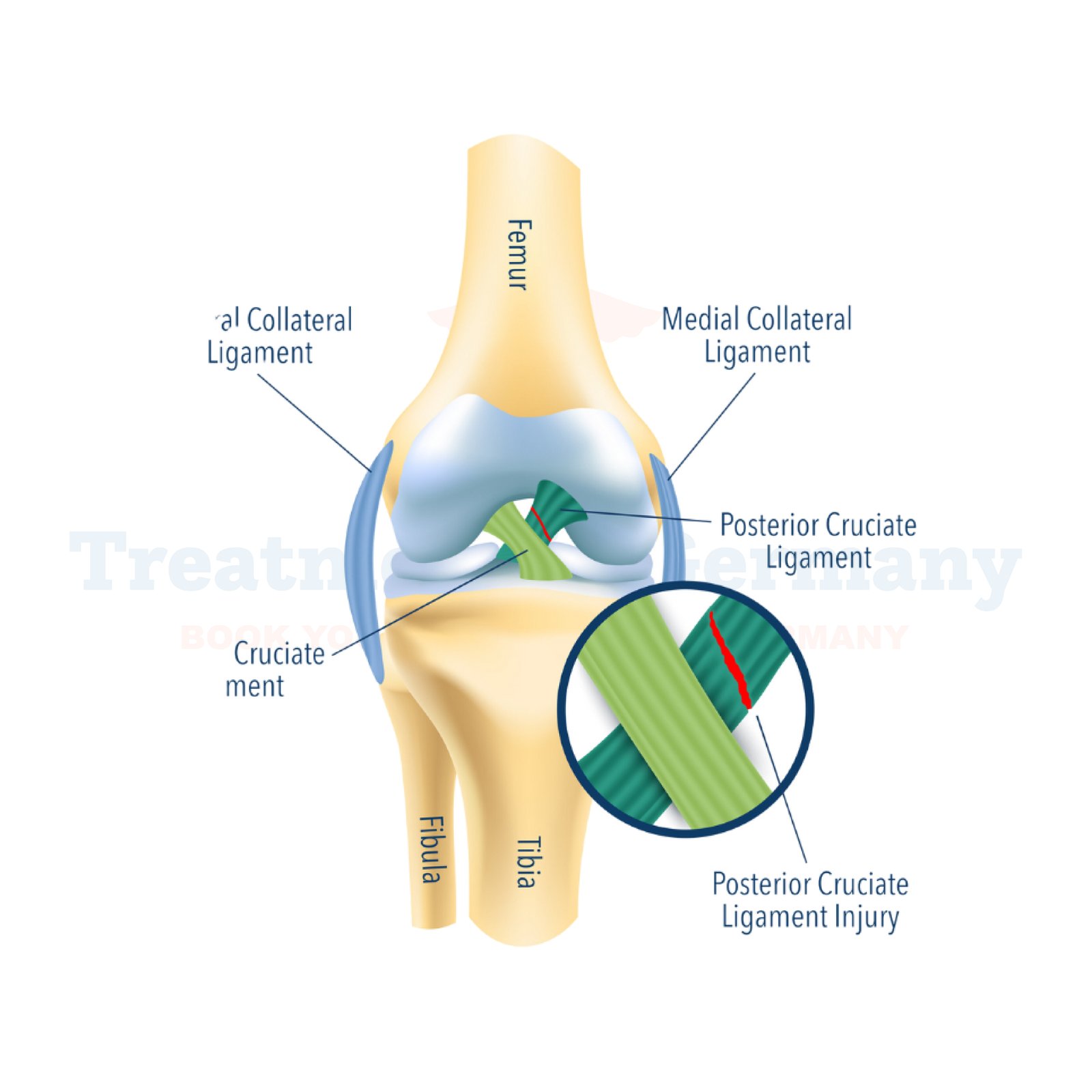What is Posterior Cruciate Ligament (PCL) Injury?
The Posterior Cruciate Ligament (PCL) is a crucial ligament located within the knee joint, connecting the femur (thigh bone) to the tibia (shin bone).
Its primary function is to stabilize the knee by preventing the tibia from moving too far backward in relation to the femur. PCL injuries typically occur due to sudden impact or trauma to the knee, often in sports or vehicular accidents.
Side Effects of Posterior Cruciate Ligament (PCL) Injury
When the Posterior Cruciate Ligament is injured, patients may experience:
- Instability in the knee: Difficulty in bearing weight or feeling that the knee may give way.
- Pain and swelling: Immediate pain at the time of injury, followed by swelling around the knee joint.
- Limited range of motion: Difficulty in fully extending or flexing the knee.
How is Posterior Cruciate Ligament (PCL) Injury Diagnosed?
Diagnosis of Posterior Cruciate Ligament injury involves:
- Physical examination: The doctor assesses knee stability, range of motion, and tenderness.
- Imaging tests: X-rays may be taken to rule out fractures, while MRI scans provide detailed images of soft tissues like ligaments to confirm PCL injury.
Potential Treatment of Posterior Cruciate Ligament (PCL) Injury
Treatment options depend on the severity of the injury:
- Conservative treatment: Mild to moderate injuries may heal with rest, ice, compression, and elevation (RICE protocol), along with physical therapy to strengthen surrounding muscles.
- Surgical intervention: Severe PCL tears or injuries associated with other ligament damage may require surgical reconstruction. This involves repairing or replacing the torn ligament with grafts, often from the patient’s own tissues or from donors.
👉 Contact us for further information and receive a complimentary consultation.

.webp)
.webp)
 (1).webp)
 (1).webp)

.webp)
.webp)
 (1).webp)
 (1).webp)
